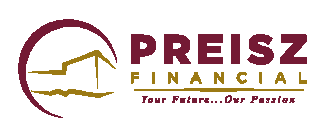Employee Benefits
Employee Benefits
Insurance products are a critical component of your overall compensation package and they are an important part in attracting and retaining talented workers. Navigating the ever-changing environment of employee benefits, including understanding healthcare reform and the Affordable Care Act (ACA), has become difficult for employers, regardless of their size. We know that each client is different and we are committed to working with you to create a benefits program that is affordable for you and valuable to your employees.
Group Medical
Medical coverage is the most valuable part of your benefits package. Benefits include prescription drug, preventive care, emergency & urgent care, inpatient and outpatient services just to name a few.
Group Dental
Dental coverage is a benefit most employees value just as much as medical coverage. Plans include preventive dental care (cleanings, exams, etc.); basic (fillings and extractions, etc.) and major care (crowns, bridges, etc.).
Group Vision
Vision plans typically cover eye examinations, prescription eyeglasses (lenses and frames), and/or contact lenses. Some insurance companies include eye exams as part of their medical benefits, but the hardware is not covered unless a vision plan is packaged with the medical or dental.
Group Life & Disability
Group Life insurance is one of the most affordable and invaluable benefits an employer can include in their employee benefits package. You can purchase a flat amount for all employees, base the amount on a percentage of employee’s annual salary, or purchase amounts based on classes (i.e. Owners – $100,000; Manager – $50,000; All Others – $25,000).
Group Disability provides replacement income to an employee who is unable to work for a period of time. Disability plans may include flexible starting periods, benefits to replace up to 70% of lost income, a partial disability benefit and vocational rehabilitation assistance. There are two different types of disability insurance coverage:
- Short Term Disability (STD)
- Long Term Disability (LTD)
Employers often (but not always) offer both of these types of coverage, with short term disability benefits kicking in first and then being replaced by long term disability benefits for long term illnesses or injuries.
Flexible Spending Accounts (FSA)
A Flexible Spending Account (FSA) is a reimbursement plan governed by IRS Section 125 and are a win-win for employers and employees. Employees contribute a certain amount of their gross income to a designated account before taxes are calculated and employers do not pay Social Security or Unemployment taxes on the amount the employee sets aside. The money put in this account is used to pay for certain out-of-pocket health care costs (ex: medical and dental expenses, including copayments and deductibles) as well as dependent care expenses.
Health Savings Accounts (HSA)
HSAs are tax-exempt accounts where funds grow to pay for medical expenses. They were created to help give control back to consumers and lower healthcare costs. HSAs provide a financial incentive for consumers to select a High Deductible Health Plan (HDHP). HDHPs have lower monthly premiums than traditional plans. The HSA/HDHP combination provides consumers with more incentive to shop carefully for healthcare services. The bank account is controlled by the insured, and is spent tax-free.
Health Reimbursement Accounts (HRA)
HRAs are employer-funded accounts that employees use to pay for qualified medical expenses.
Voluntary & Worksite Programs
Voluntary benefits are offered at the worksite (through the employer) and feature convenient payroll deduction for premium payments. Plus, many plans can be purchased through a flexible benefits plan, allowing employees to save money by paying for valuable coverage with pre-tax dollars. Plans include:
- Disability Insurance
- Accident Insurance
- Life
- Cancer
- Critical Illness Insurance
Employee Benefit Statements
One simple but effective tool for employers to communicate the value of company benefits is a Total Compensation Statement. This is one of the best ways to help employees understand the soft dollar compensation they receive from your benefit programs in addition to their salary. This will allow employees to know what these programs cost the company in relation to the employees’ cost to participate.
When employees see the total value of their “hidden paycheck”, it often leads to improved morale, reduced turnover, and increased productivity. When turnover is reduced, the costs to recruit, hire and train replacements are lower. That translates to greater profitability.


